Castle Point Station
Garth Coulter, New Zealand Tree Grower August 2011.
‘Land, Trees and Community’ was the theme for this conference. An alternative theme could have been ‘Join farm forestry and experience New Zealand’. I congratulate the conference committee for organising this visit to a historic and iconic part of New Zealand.
The commentary and discussion on the buses is always an integral part of any field trip. This was no exception − our commentator gave us a good insight into land use from a regional council point of view. It is always a disappointment to me that so many of our enthusiastic and educated agricultural graduates go into a compliance career rather than farm or forestry consultancy.
The present owners of Castle Point Station, Emily and Anders Crofoot, bought this property in 1998 and added to it in subsequent years with the purchase of adjoining property. The Crofoots are east coast American migrants. An iconic New Zealand property owned by perceived wealthy Americans would have brought up the debate of overseas ownership of New Zealand farmland. Farm foresters were given the opportunity to see and hear the contribution this family has made to New Zealand. First, by investing capital in the initial land purchase followed by development in roading, fencing and buildings, all well thought out and well maintained.
The value Emily and Anders place on staff was obvious, the word ‘I’ was never used always ‘we’ when discussing farm management. The Crofoots bring a positive and disciplined form of ownership with a commitment to long term planning and land stewardship. If only all overseas investment could bring these qualities of commitment.
A brief history
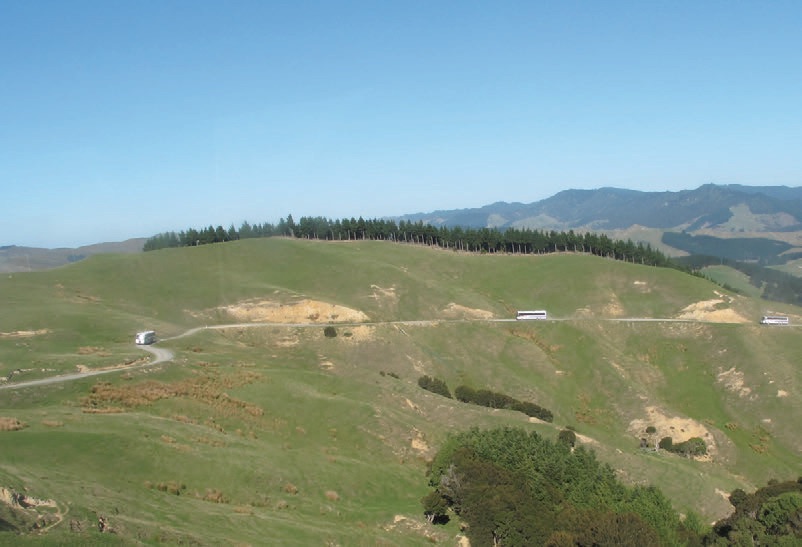
Early Maori left their mark on this landscape with their use of fire as a moa hunting technique. The regrowth of scrub and tussock was the ground cover Thomas Guthrie found when settling Castle Point Station in 1848. Then in 1873 the property was sold to GM Waterhouse, on-selling in 1876 to Walter Woods Johnston. This family farmed the property until 1998 when the Crofoots bought it. Otahome Station was added in 1995. Wai Ngaio was bought in 2008 giving a total area of 3,680 hectares.
The contour is steep hill country 1,569 hectares, easy hill 1,614 hectares, flats and terraces 290 hectares, with pine plantations 202 hectares. The farm has 20,000 sheep and 1,000 cattle. Farm income is 20 per cent from wool, 60 per cent from lamb and 20 per cent cattle sales.
This field day was about good farm management including tree planting to meet defined objectives. The property is a well subdivided and managed farm. We saw how each area of this farm is used to its full potential. This is a credit to the staff ’s skill and management.
The first impression of this property is of a vast exposed landscape with serious land movement. With a coastal boundary of more than 20 km there are extended periods when wind speed will exceed 50 km per hour. It was said that the only thing that will not blow away is the mortgage.
Castle Point Station has a rainfall of 925 mm, and summers are usually dry. There are periods when consistent rainfall or heavy downpours occur. The soils can become waterlogged and unstable, slips or soil movement is inevitable.
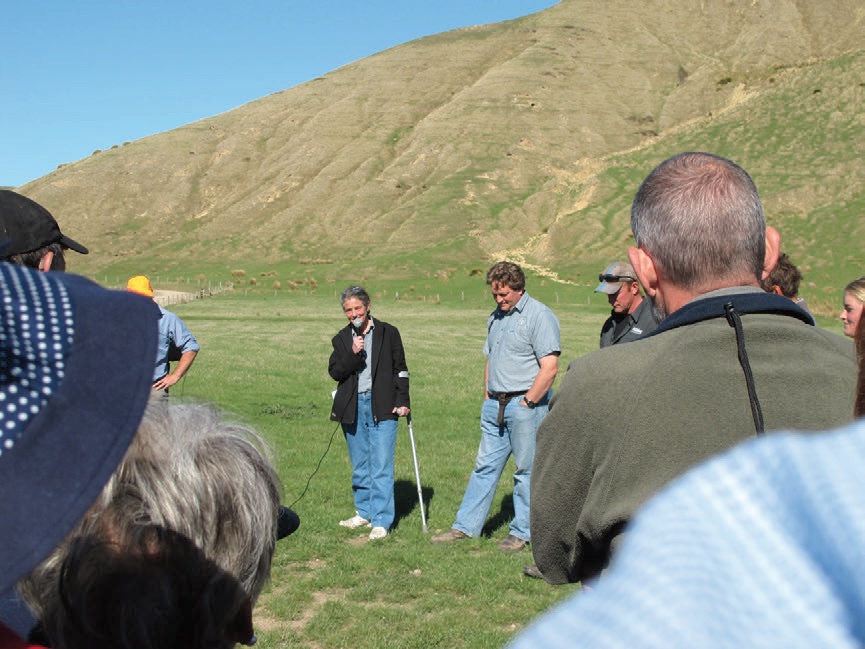
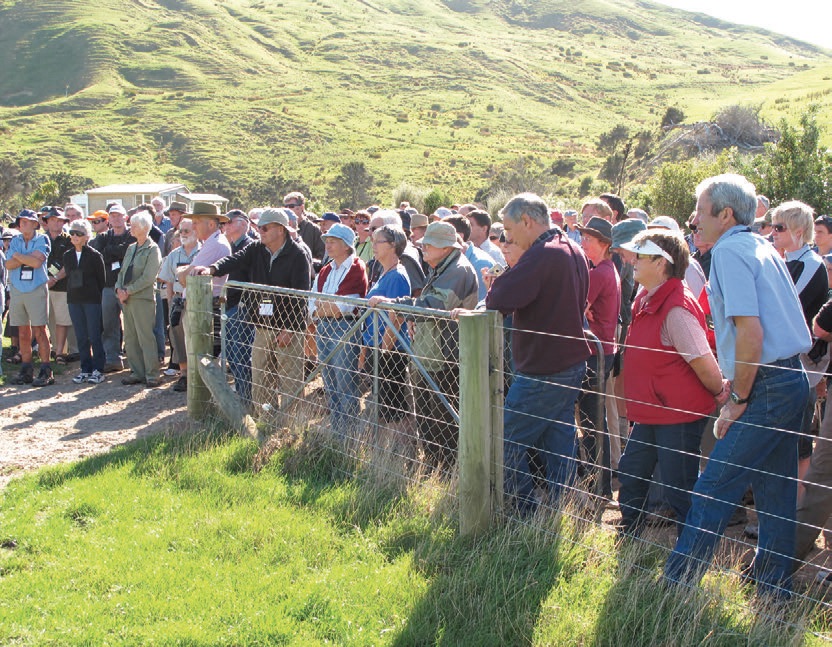
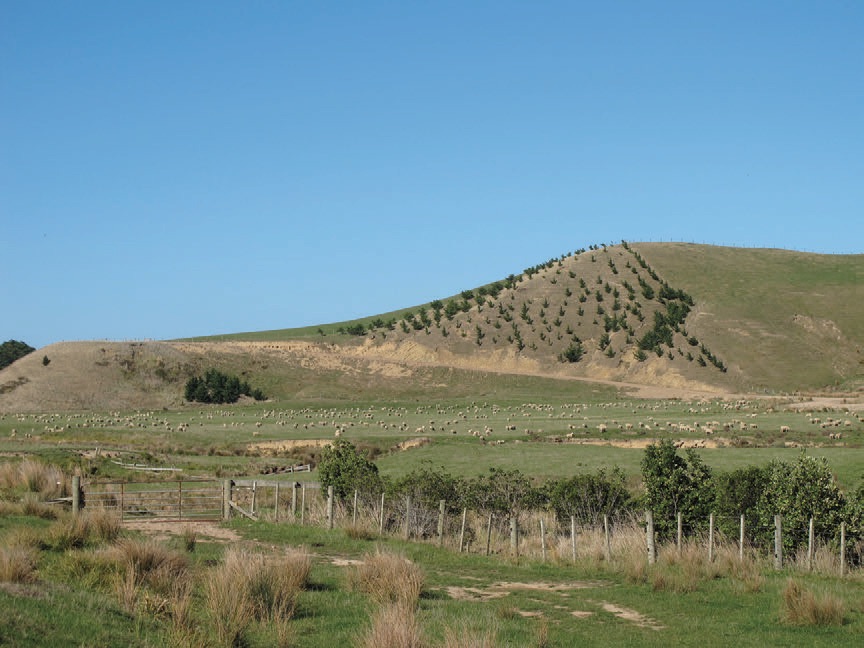
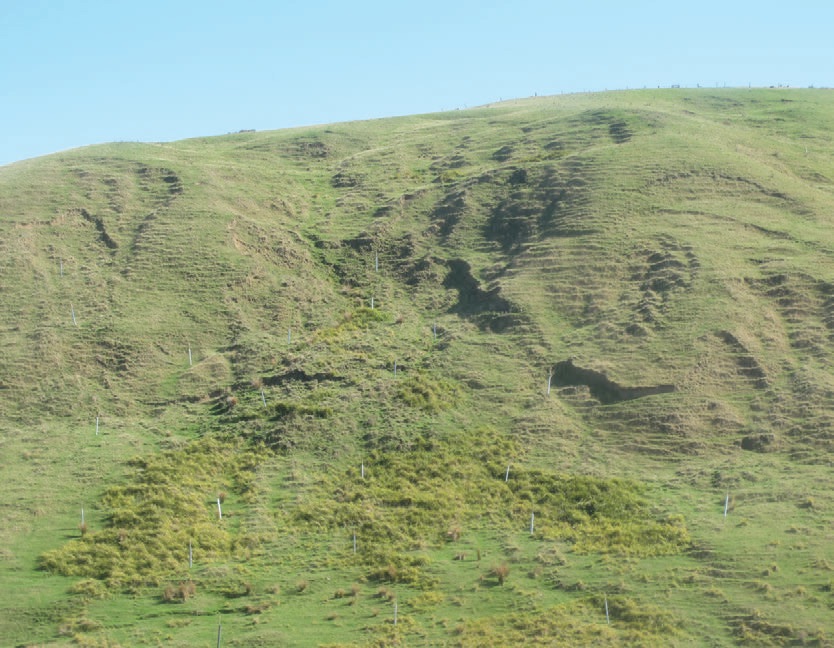
A comprehensive sustainability plan for the station was developed by the greater Wellington Regional Council in 1999. The initial draft plan proposed large pastoral areas being planted in radiata pine. The Crofoots have opted to use poplar and willow in these areas, keeping the land in productive pasture. A pole nursery established in 1991 supplies a portion of the 2,000 poplar and willow poles planted annually. There are plans to expand this nursery with the possibility of irrigation using the Castle Point oxidation ponds. Currently about 200 hectares have been planted with poplar and willow poles. There is a final goal of protecting about 400 hectares. For shelter and erosion control on the coastal terraces, flax grown from local seed is the chosen option.
Long term planning
Forestry is an important though not dominant land use on Castle Point Station. Most of this station is in pasture and the Crofoots do not want to plant out good land. ‘If we were going to be foresters we would buy forestry land,’ they say.
On exposed sites radiata pine will not produce quality timber, often developing compression resin pockets. New plantings fall within three categories − erosion control and land stability, shelter and shade, and amenity value. Within these categories trees will be managed for production where possible. The Crofoots would prefer to have mixed forestry rather than a monoculture, having consideration for growing natives longer term and redwoods and eucalypts for timber. This is a family with long term views of best land use.
Effects of the ETS
This field day was the one opportunity of this conference to discuss the incentives and liabilities associated with the introduction of the Emission Trading Scheme. The proposal to penalise change of land use from forestry was the incentive for the Crofoots to harvest the many small pockets of forestry located near the settlement of Castlepoint. It was decided the ultimate land use would not be in forestry. Therefore, to avoid the risk of a possible penalty, these trees were harvested in 2007 allowing a change of land use to amenity planting and grassland.
The purchase in 2008 of Wai Ngaio an adjoining property with 130 hectares of 13-year-old pines gives the Crofoots the option of selling carbon credits from these trees to help to help fund the purchase. Wai Ngaio has other areas the Crofoots would consider suitable for further plantings.
The remainder of the small plantations, a total of 72 hectares, have been signed into the ETS. Credits from these are being held to offset the proposed future liabilities that the inclusion of agriculture in the ETS will create.
The Crofoots are exploring ways their polar and willow plantings could be modified to be included in this scheme. It is difficult to comply with uncertain legislation that each political party feels it has the right to modify for its own political agenda. To me it would be disappointing to see the ETS used as a land tax.
I thank Emily and Anders Crofoot and their staff for sharing this day with farm foresters. They demonstrated the opportunities in farming, forestry and the implications and liabilities of the ETS legislation.
Garth and Joy Coulter own a 200 hectare property in the Hokianga on which they have planted 100 hectares in radiata pine.They are long time members of the Mid North Branch.
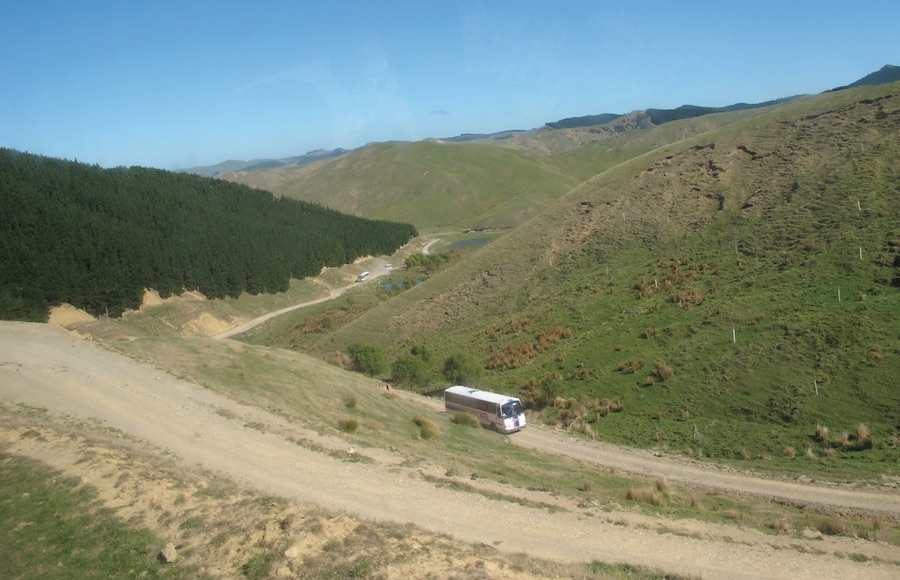

 Farm Forestry New Zealand
Farm Forestry New Zealand